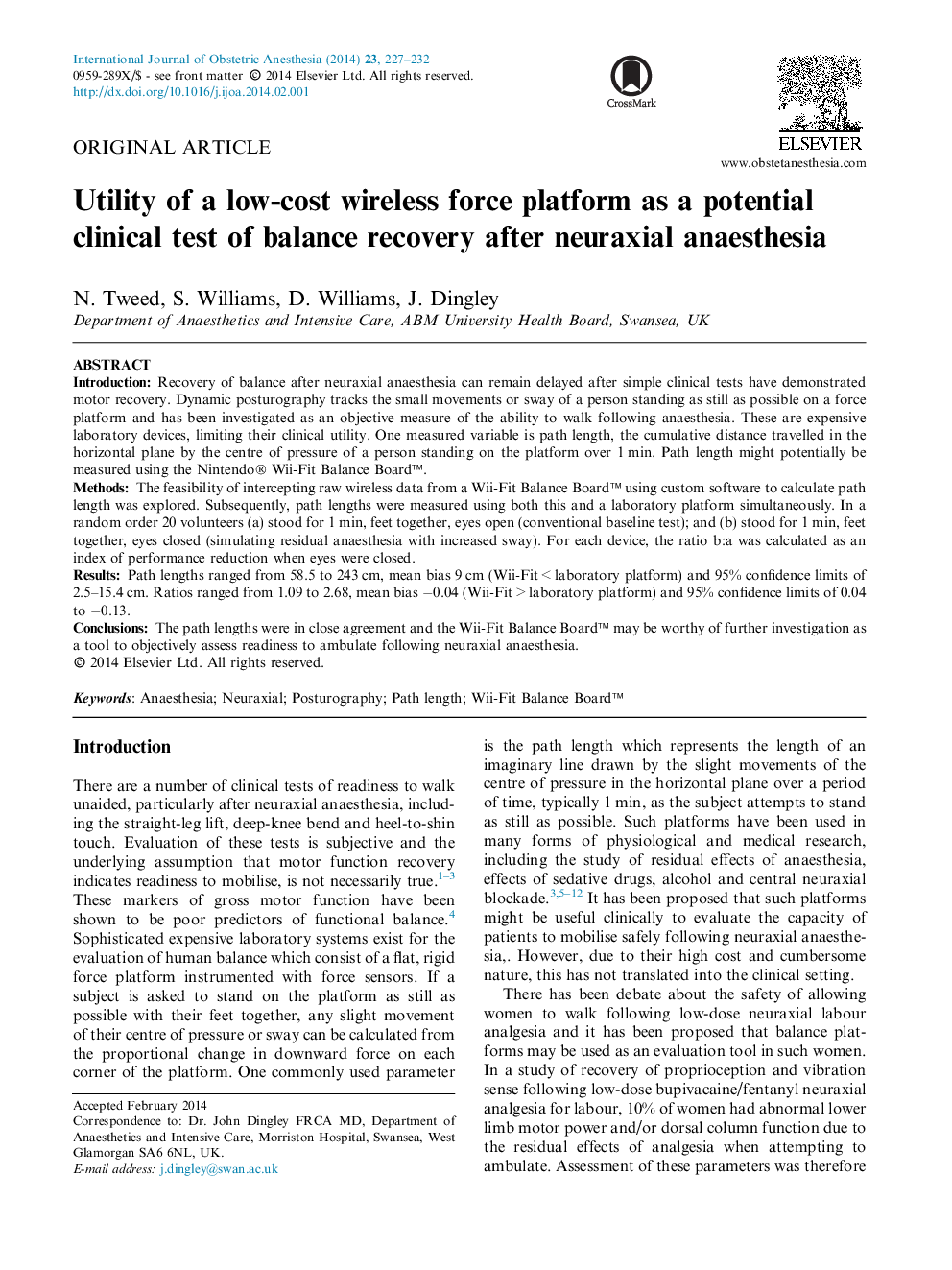| Article ID | Journal | Published Year | Pages | File Type |
|---|---|---|---|---|
| 5883285 | International Journal of Obstetric Anesthesia | 2014 | 6 Pages |
IntroductionRecovery of balance after neuraxial anaesthesia can remain delayed after simple clinical tests have demonstrated motor recovery. Dynamic posturography tracks the small movements or sway of a person standing as still as possible on a force platform and has been investigated as an objective measure of the ability to walk following anaesthesia. These are expensive laboratory devices, limiting their clinical utility. One measured variable is path length, the cumulative distance travelled in the horizontal plane by the centre of pressure of a person standing on the platform over 1 min. Path length might potentially be measured using the Nintendo® Wii-Fit Balance Boardâ¢.MethodsThe feasibility of intercepting raw wireless data from a Wii-Fit Balance Board⢠using custom software to calculate path length was explored. Subsequently, path lengths were measured using both this and a laboratory platform simultaneously. In a random order 20 volunteers (a) stood for 1 min, feet together, eyes open (conventional baseline test); and (b) stood for 1 min, feet together, eyes closed (simulating residual anaesthesia with increased sway). For each device, the ratio b:a was calculated as an index of performance reduction when eyes were closed.ResultsPath lengths ranged from 58.5 to 243 cm, mean bias 9 cm (Wii-Fit < laboratory platform) and 95% confidence limits of 2.5-15.4 cm. Ratios ranged from 1.09 to 2.68, mean bias â0.04 (Wii-Fit > laboratory platform) and 95% confidence limits of 0.04 to â0.13.ConclusionsThe path lengths were in close agreement and the Wii-Fit Balance Board⢠may be worthy of further investigation as a tool to objectively assess readiness to ambulate following neuraxial anaesthesia.
